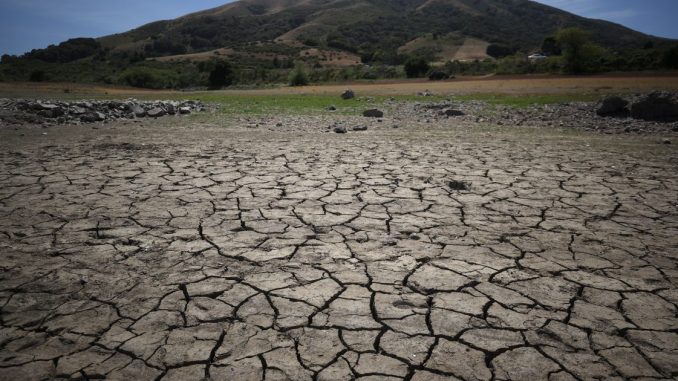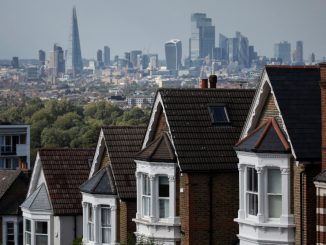

NICASIO, CALIFORNIA – MAY 28: Dry cracked earth is visible as water levels are low at Nicasio Reservoir on May 28, 2021 in Nicasio, California. According to the U.S. Drought Monitor, 16% of California is in exceptional drought, the most severe level of dryness. (Photo by Justin Sullivan/Getty Images)
OAN Newsroom
UPDATED 2:36 PM PT – Tuesday, June 1, 2021
California has been experiencing the worst drought in over 40 years. This is taking place only a few years after a five year long dry spell left farmlands barren and fueled some of the most destructive wildfires in state history.
Complicating matters even more, the federal government announced last week that it would cut water deliveries in half to cities in the state while also reducing water allocation to farms down to zero. The Bureau of Reclamation Regional Director Ernest Conant went on to explain this announcement.
“This year is the worst drought, the worst year since 1977,” he stated. “Our water supplies are very deficient this year, and we simply don’t have enough water to be able to supply our water service contractors with the water supply.”
The expansion of extreme/exceptional #drought across California continues. Currently, 74.46% of the state is covered by extreme and exceptional drought, the highest coverage since early February 2015. #CAwx #CAwater #CAfire pic.twitter.com/mzSk6srbC2
— US StormWatch (@US_Stormwatch) May 27, 2021
Farmers have been searching for ways to stay afloat. A trend in recent years has been to uproot water consuming trees and replace them with row crops. Although as the state continues to restrict water access, some farmers are forced to simply abandon the land they can no longer irrigate. Farmer Joe del Bosque is leaving a third of his 2,000 acre farm unseeded this year. Unsure if the water will arrive on time, even what he does plant has been a gamble.
“We’ve never been through this situation before for whatever little water we’ve gotten in the past,” the farmer explained. “This year, we can’t plan because we don’t know when we’ll get water that we are trying to get for these crops.”
Del Bosque went on saying his operation could lose more than half of a million dollars in income as well as put many of his 700 employees out of work.
“It’s an economic disaster. We don’t plant crops, we don’t have jobs, we don’t produce food,” he expressed. “As we saw during the pandemic, you know, this industry is essential for everyone. We work to feed everybody.”
With winter rainfalls at historic lows, the state’s major reservoirs are about 70 percent of their normal levels. Farmers say the drought has been exacerbated by California’s lack of investment in water storage infrastructure over the last 40 years.
Conant went on by explaining, “we need to build additional storage long term.” He noted the state of California is pursuing several projects to develop additional storage.





Be the first to comment